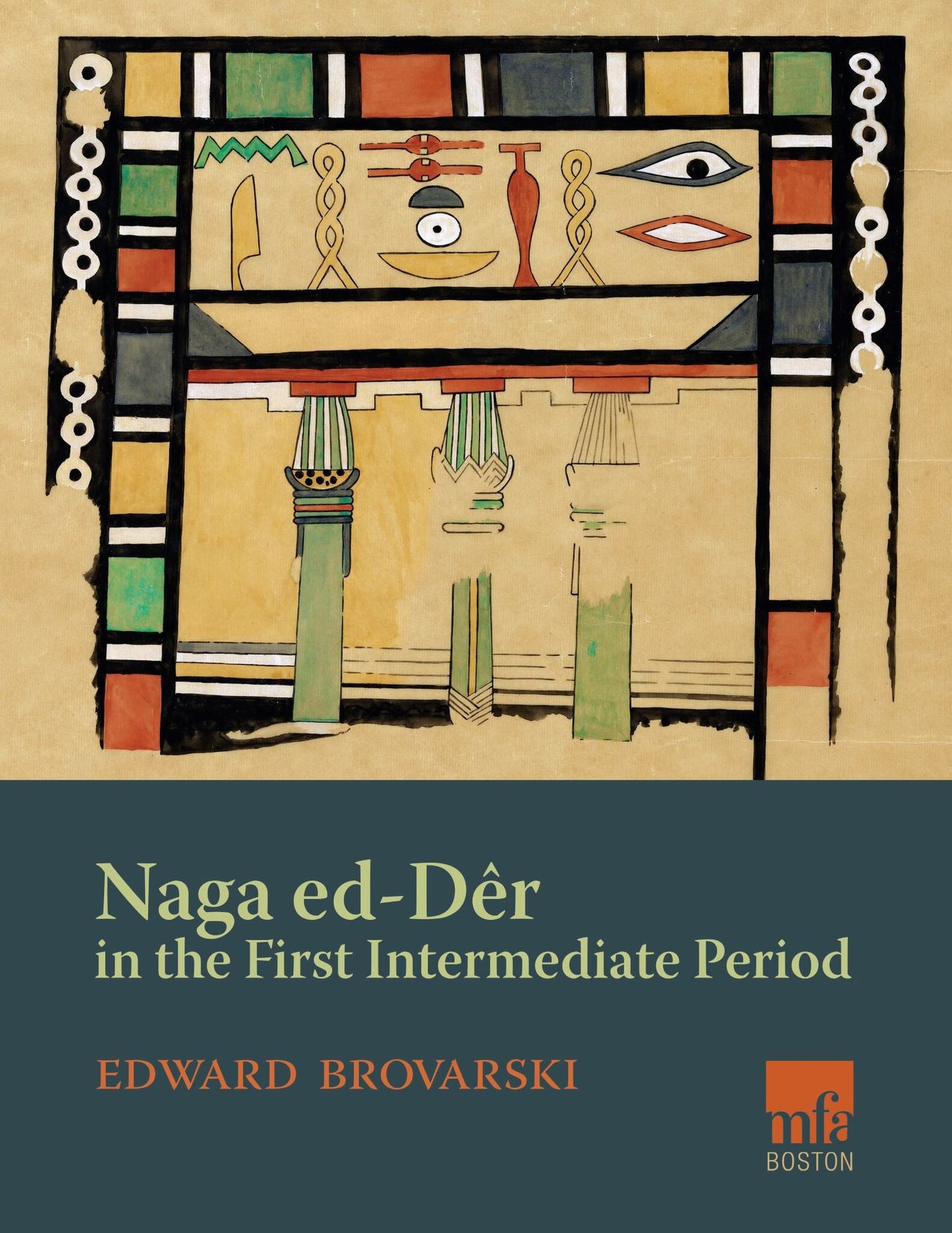We're sorry. An error has occurred
Please cancel or retry.
Naga ed-Deir in the First Intermediate Period

Some error occured while loading the Quick View. Please close the Quick View and try reloading the page.
Couldn't load pickup availability
- Format:
-
31 March 2019

Beginning in 1901, George A. Reisner conducted a number of excavating campaigns in the neighbourhood of the modern village of Naga ed-Dêr in Upper Egypt, opposite the ancient city of Thinis, at first for the Hearst Expedition of the University of California (up to 1905) and thereafter for the Harvard University-Boston Museum of Fine Arts Expedition.
Naga ed-Dêr is important because of a series of ancient cemeteries extending in time from the Predynastic period to the Middle Kingdom. These cemeteries run for about six kilometres from Sheikh Farag on the north to Mesheikh on the south and form parts of a single large cemetery of the Thinite nome UE 8. In the course of the excavations at Naga ed-Dêr, Reisner discovered in addition extensive remains of the First Intermediate period-decorated tombs, steles, and inscribed coffins-belonging to the period extending from the end of the Sixth to the Eleventh Dynasties. The Predynastic, Early Dynastic, and Old Kingdom material from Naga ed-Dêr has been studied and published by Reisner and Arthur C. Mace and by Albert M. Lythgoe and Dows Dunham. Dows Dunham published seventy-five steles from Reisner's excavations in 1937.
This volume endeavours to date the material found by Reisner, including the inscribed stones published by Dunham, with a view to elucidating the history of the site in the period between the Old and Middle Kingdoms. Furthermore, a number of steles seen on the art market or in museums or private collections which, by their style, belong clearly to Naga ed-Dêr, have been added as supplementary material.

HISTORY / Ancient / Egypt, SOCIAL SCIENCE / Archaeology, Archaeology by period / region

PREFACE
LIST OF TABLES
LIST OF FIGURES
LIST OF PLATES
LIST OF COLOR PLATES
ABBREVIATIONS
1. INTRODUCTION
2. HISTORICAL BACKGROUND
3. THE TOPOGRAPHY OF THE THINITE NOME
4. THE GODS OF THE THINITE NOME
Anubis
Khentyamentiu
Onuris
Osiris
Wepwawet
5. THE TEMPLE AT THINIS
6. THE HIGH OFFICIALS OF THE OLD KINGDOM
Dynasty 5
Dynasty 6 and later
The Gebrawi Nomarchs
The Nomarchs at the Residence
7. INSCRIPTIONS OF DYNASTIES 5–6
Cemetery 500-900
Dunham 51 and 68
8. INDICATIONS FOR DATING
Introductory Considerations
The Late Old Kingdom (Dynasties 6–8)
Stylistic and Iconographic Indications
Palaeographic and Epigraphic Indications
The Early Heracleopolitan Period (Dynasty 9)
Stylistic and Iconographic Indications
Palaeographic and Epigraphic Indications
Early Dynasty 10 and Early Dynasty 11
Stylistic and Iconographic Indications
Palaeographic and Epigraphic Indications
Late Dynasty 10 and Late Dynasty 11
Stylistic and Iconographic Indications
Palaeographic and Epigraphic Indications
9. DYNASTIES 6–8
Introduction
The Other Inscriptions of Dynasties 6–8
The Coffins of Dynasties 6–8
10. THE NOMARCHS AND OVERSEERS OF PRIESTS OF DYNASTY 9 AND LATER
11. DYNASTY 9
Introduction
The Stele Groups of Dynasty 9
The Red Group
The Blue Group
The Polychrome Group
The Green Group
The Other Inscriptions of Dynasty 9
The Anomalous Group
The Other Steles of Dynasty 9
12. EARLY DYNASTIES 10 AND 11
Introduction
The Stele Groups of Early Dynasties 10 and 11
The Other Steles of Early Dynasties 10 and 11
13. LATE DYNASTIES 10 AND 11
Introduction
The Stele Groups of Late Dynasties 10 and 11
Settgast's Group
The Other Steles of Late Dynasties 10 and 11
14. SELECT COFFINS FROM NAGA ED-DER
15. SUMMARY AND CONCLUSIONS
Appendices
A. ASWAN
B. GEBELEIN IN THE FIRST INTERMEDIATE PERIOD AND DYNASTY 11
C. THE TOMB AT HAGARSA
D. THE DATE OF ANKHTIFY AT MOALLA
E. ELEVENTH DYNASTY STELES IN THE THEBAN STYLE
BIBLIOGRAPHY
Indices
1. Inscribed Coffins
2. Royal Names
3. Divinities
4. Personal Names
5. Names Elsewhere
6. Place Names
7. Titles
8. Signs
9. General Index
10.Words, phrases, grammatical elements
11.Museum Numbers



